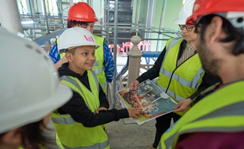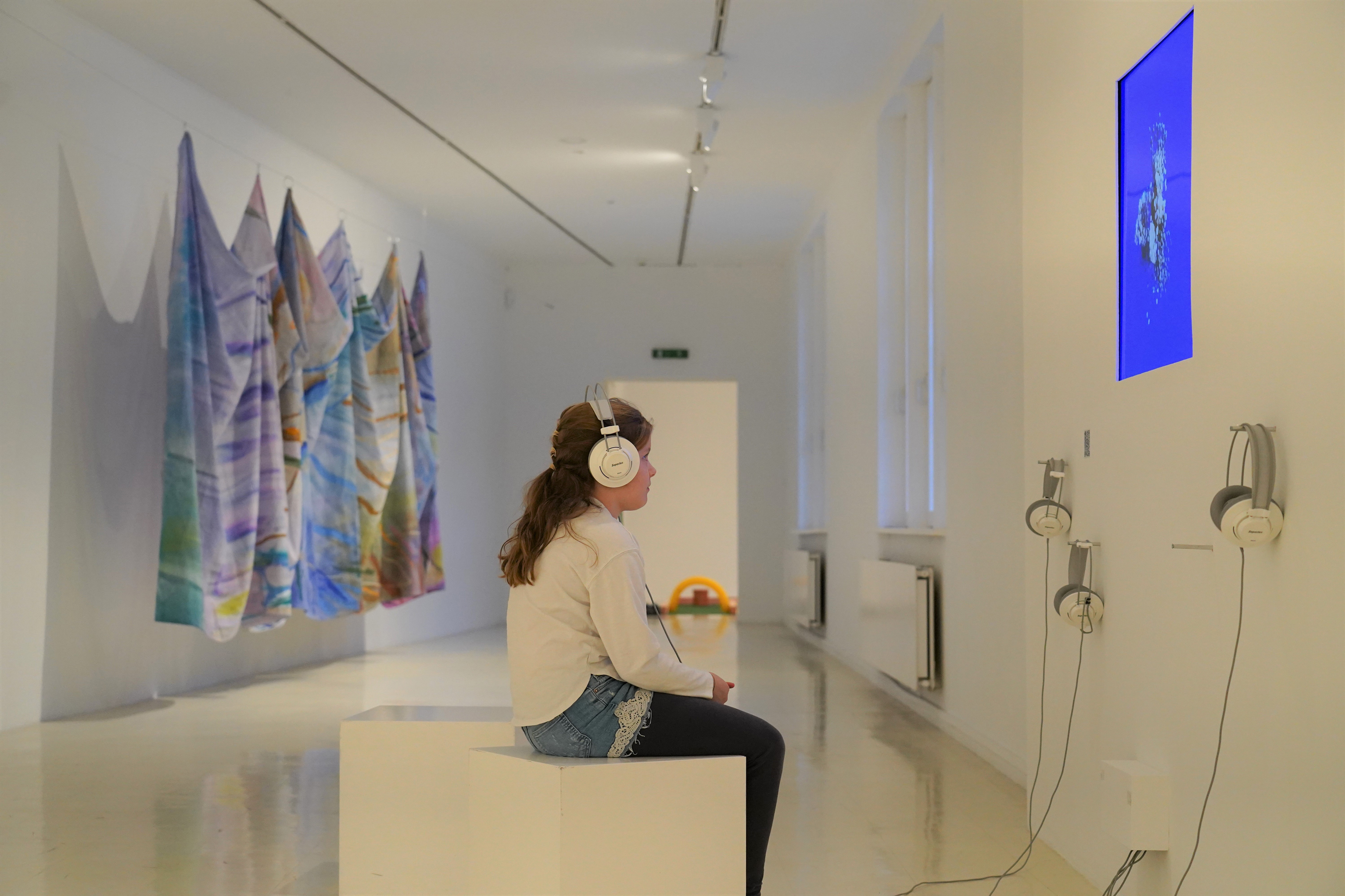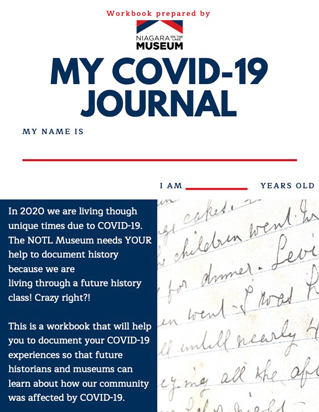Considering Children in Museums
Rebecca Friend

Young V&A Youth Collective members touring the construction site before opening. Photo — Young V&A.
Children have long been seen as an integral audience for museums. The 2021 report Trust and Value: The Role of Museums in Canada in the Twenty-First Century, produced by the Alberta Museums Association with contributions from museums and heritage associations across the country, documented that 96% of Canadians saw educating children as a museum’s most important role when asked in 2012. Almost all Canadian respondents (92%) also believed that children should visit museums.
Across Canada and beyond, children are targeted as museum visitors and solicited as participants in programming initiatives. While this approach has been successful in bringing young people into museum spaces, some scholars and museum practitioners have begun questioning whether there are ways to engage children in museums as more than receivers of knowledge and programming initiatives, but as potential partners and co-producers.
Moving Towards a ‘New, Critical Children’s Museology’
Leading this call is public historian, cultural anthropologist, and independent curator Monica Eileen Patterson. Her work argues that children have a great deal to offer museums - but only if they are recognised for the contributions they can make. Her research and curatorial practice seek to develop a new, critical children’s museology, through research and co-curation with children. For Patterson, this means that museum content and programming should be developed not only “ for and about children, but also by and with children in ways that engage them as valued social actors and knowledge-bearers.”
These types of initiatives are informed by recent trends in participatory museology, and long-standing practices in children’s museums that prioritize children’s active engagement, freedom, and enjoyment. But Patterson is adamant that these approaches should be applied to museums and galleries of all types, not just those designated ‘for children.’ While the field of Museum Studies has seen calls for a ‘new,’ ‘critical,’ and even ‘post’ museology that look for ways to break down elitist and exclusionary museum practices, Patterson’s work reminds us that children should also be included in these democratization efforts.
As a doctoral student at Carleton University myself, I study how young people are considered across Canadian museums – both as content in collections and exhibitions and as collaborators in programming and curatorial initiatives. My work is indebted to scholars like Patterson who are vocal in highlighting young people's museological potential. Our research together has sought out examples of how museums are collaborating with young people to make innovative changes to their offerings, and the following section spotlights a number of museum projects that do so in new and innovative ways.
Critical Children’s Museology in Practice - Canada and Beyond
An increasing number of museums are taking on projects that engage young people in their institutions as more than valued visitors and learners. From consultants and curators to youth council members and targeted collections contributors, the following examples help illustrate alternative ways museums are incorporating children and youth’s perspectives into their offerings.
Consultants
As consultants, children and youth have been contributing to the renewal of museum spaces around the world. At the newly opened Young V&A, formerly known as the V&A Museum of Childhood in Bethnal Green, London, more than 22,000 local children lent their perspectives and creative ideas to help co-create the renewed offering following a 10-month residency set up at the museum by architecture firm AOC Architecture.
On a smaller scale, the Canadian Museum of History recognized children as valued consultants during their one-day Reimagining the Children’s Museum event in October of 2018. There, children and their families were invited to dream about what the new museum could be using a variety of media including words, drawings and 3-D dioramas. Children were also invited to direct an on-site professional illustrator to sketch out their fantasies in real time. Both of these examples recognize that designing a new museum could not proceed without first consulting their target audience - young people themselves.

Wildes Morgen promotional image. Photo — Stadtalerie Saarbrücken.
Curators
A number of new exhibitions curated by and with children have been attracting visitors and media attention. One notable example is the Wildes Morgen (Wild Morning) show curated by six child-artists currently running at the Stadtgalerie Saarbrücken in Saarbrücken, Germany.The likes of this exhibition recognize children’s creativity and insights in ways that, as the Stadtgalerie Saarbrücken ‘s website describes, “give young people a voice and empower them to help shape their city.”
At the CSMVS children’s museum in Mumbai, India, children aged 13-19 curated the exhibition POV: Drishtikon (Drishtikon being Hindi for point-of-view) which opened in August of 2023. As part of the museum’s regularly scheduled programming, this year’s group of young curators selected objects from the collection and created new interpretations inspired by existing works for the exhibition. In both cases, young people were offered the chance to take on a role not typically extended to non-experts in museum spaces, thus recognizing their interpretive and creative capacities.
Youth Councils
Museums across Canada and beyond have been running youth councils in an attempt to provide young people with some direction over museum offerings. The Art Gallery of Alberta’s Youth Council, for example, invites youth aged 13-17 to “participate in the decision-making and creation of a safe(r) space for youth to explore, experiment, and express themselves through the arts.”
At the Bytown Museum in Ottawa, a Youth Council helps to promote the city’s history through various projects guided by their motto “for youth, by youth.” Similarly, Toronto’s Royal Ontario Museum runs a Youth Cabinet composed of Indigenous and non-Indigenous youth which employs an “Indigenous framework and a for-youth-by-youth philosophy” to support members as they work towards producing youth-centred projects. Each of these examples demonstrates how young people can take on leadership capacities within museums: as experts on youth-related programming and beyond.

Digital cover of the Niagara-on-the-Lake Museum’s 2020 Covid-19 Intermediate Workbook designed to encourage young people to submit their Covid-19 experiences to the museum. Illustration — Niagara-on the- Lake Museum.
Collections Contributors
The Covid-19 pandemic spurred a number of museums to take on rapid-collecting projects to help document its impacts on people’s lives, including its impacts on children and youth. As Patterson and I have previously discussed, several Canadian museums explicitly sought out young people’s cultural productions as part of their collecting initiatives. These included the Niagara-on-the-Lake Museum’s circulation and collection of workbooks with a variety of documentary activities for young people to fill out, and the Huron County Museum’s call for children specifically to submit responses to their Rapid Response Collecting initiative.
While the Covid-19 pandemic spurred an unprecedented interest from museums in collecting contemporary children’s culture, similar rapid-response initiatives should continue valuing children as knowledgeable and contributing members of society whose unique perspectives are worthy of museum collections.
Children’s Participation in Museum Practice Moving Forward
The above selection of projects and initiatives reminds us that bringing young people into museums as collaborators and contributors is possible on any scale or budget. Canadian museums have a rich history of considering children as important members of the museum community. By adopting some of the key principles of critical children’s museology as Patterson has outlined, museums can move beyond predominantly considering children as a valued audience, and towards recognizing them as thoughtful co-producers as well.
Rebecca Friend is a PhD candidate in Public History at Carleton University studying representations of children and childhood in Canadian museums. She is an experienced museum professional who has worked as a researcher for museums across Ottawa, while also teaching courses for Carleton’s Childhood and Youth Studies program and History department.
With special thanks to Dr. Monica Eileen Patterson
